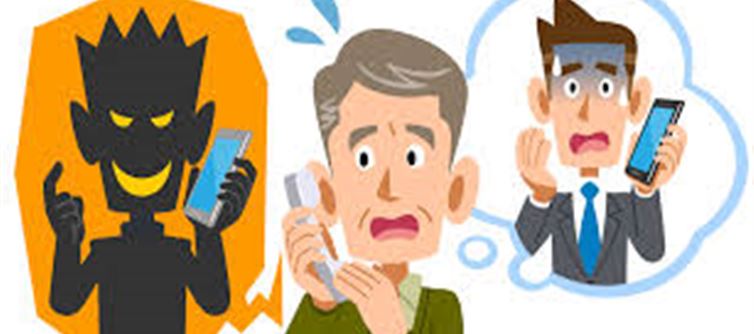
Cybercrime is evolving rapidly, and scammers are using increasingly sophisticated methods to rob unsuspecting individuals of their savings. One of the most common tactics used by fraudsters today is pretending to be legitimate customer care representatives. They aim to deceive you into sharing sensitive personal information, which is then used to empty your bank account.
Here are the red flags to watch out for and tips on how to protect yourself from falling victim to such scams:
1. Unsolicited Calls from customer Care
Legitimate customer care departments typically do not initiate unsolicited calls asking for sensitive information like your account number, PIN, OTP (One-Time Password), or password. If you receive a call out of the blue from a number claiming to be from your bank or a service provider, be cautious.
Warning Sign: Random calls asking you to "verify" or "update" your personal or financial details.
2. Pressuring for Immediate Action
Fraudsters will often pressure you into taking immediate action, claiming there’s a problem with your account that needs to be fixed urgently. They might say your account has been compromised or that there is a transaction in progress that you must approve. This is a common scam tactic to make you act without thinking.
Warning Sign: Urgent or alarming language designed to provoke anxiety and force quick decisions.
3. Requests for Personal Information
Be suspicious if the caller asks for sensitive personal information like your bank account details, PIN, OTP, or passwords. Banks and legitimate service providers will never ask you to provide this kind of information over the phone.
Warning Sign: Requests for confidential information that you would normally never share.
4. Strange, Unfamiliar Numbers
If the customer care number doesn’t match the official helpline provided by your bank or service provider, don’t engage. Scammers can use spoofed numbers or similar-sounding phone numbers to make their calls look legitimate.
Warning Sign: The number appears unfamiliar or doesn’t match the official contact details you have.
5. Asking to Download Unofficial Apps
Scammers may ask you to download unofficial apps or software on your phone or computer to “fix the issue” with your account. These apps often act as remote access tools that allow fraudsters to control your device and steal your information.
Warning Sign: Request to download an app or grant remote access to your device.
6. Providing Fake Verification Codes
Scammers may tell you they’ve sent a verification code to your phone for authentication and ask you to share it. This is often the OTP that banks or service providers send. Never share this code, as it can be used to access your online banking or services.
Warning Sign: Requests to share OTP or verification codes you receive.
7. Repeated Calls or Messages
If you’ve already told someone that you're not interested in their offer or scam, but they keep calling or messaging, it's a major red flag. Legitimate companies will never pressure you repeatedly.
Warning Sign: Persistent calls, even after you’ve declined the offer or service.
8. Offering Unbelievable Deals or Rewards
Sometimes fraudsters will use an irresistible offer to lure you in. They might claim you’ve won a prize or offer you too-good-to-be-true rewards in exchange for confirming your account details.
Warning Sign: Unrealistic offers or unexpected rewards that seem too good to be true.
How to Protect Yourself from customer Care Scams
Here’s what you can do to protect yourself from falling victim to these kinds of scams:
1. Hang Up and Call Back
If you receive a call from a customer care number you weren’t expecting, don’t share any personal details. Hang up and then call the official customer care number provided on your bank statement or the company’s website to verify the authenticity of the call.
2. Do Not Share Sensitive Information
Never share sensitive information such as bank account numbers, PINs, passwords, or OTPs over the phone. No legitimate company will ask for this over a call.
3. Use Two-Factor Authentication (2FA)
Enable Two-Factor Authentication (2FA) for your bank accounts and online services. This adds an extra layer of security, making it harder for hackers to access your accounts even if they obtain your login details.
4. Report Suspicious Calls
If you suspect that you’ve been targeted by a scam, report it immediately to the customer care department of the company being impersonated, and inform the authorities. The sooner you act, the easier it is to block transactions or halt fraudulent activity.
5. Regularly Monitor bank Statements
Keep an eye on your bank account for any unauthorized transactions. Early detection can help prevent further damage. If you notice anything suspicious, contact your bank immediately.
6. Educate Others
Share this information with your friends and family, especially elderly relatives who might not be familiar with common cyber scams. Awareness is key to avoiding scams.
Conclusion: Stay Cautious
Fraudsters are becoming more clever and deceitful, but with the right knowledge and a few precautions, you can protect yourself from losing money. Always trust your instincts — if something doesn’t feel right, it probably isn’t. Stay informed, stay alert, and keep your personal information safe and secure.
Disclaimer:
The views and opinions expressed in this article are those of the author and do not necessarily reflect the official policy or position of any agency, organization, employer, or company. All information provided is for general informational purposes only. While every effort has been made to ensure accuracy, we make no representations or warranties of any kind, express or implied, about the completeness, reliability, or suitability of the information contained herein. Readers are advised to verify facts and seek professional advice where necessary. Any reliance placed on such information is strictly at the reader’s own risk..jpg)




 click and follow Indiaherald WhatsApp channel
click and follow Indiaherald WhatsApp channel